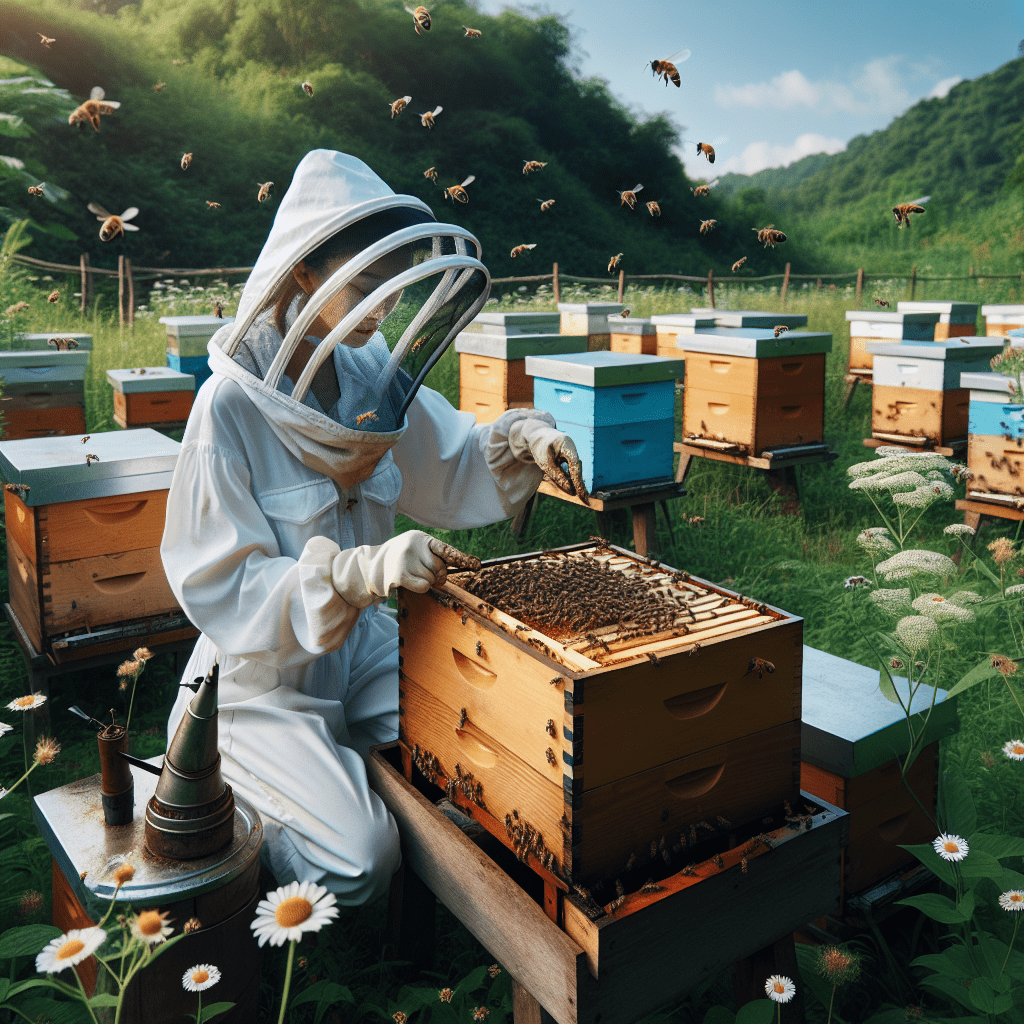Introduction to Beekeeping
Beekeeping, also known as apiculture, is the maintenance of bee colonies, generally in hives, by humans. Most commonly, the bees are honey bees in the genus Apis, but other honey-producing bees such as Melipona bees are also kept. An individual engaged in this occupation is referred to as an apiarist or beekeeper.
Beekeepers are usually concerned with the health and prosperity of their bees, as well as with the production of honey and other products such as beeswax, pollen, and royal jelly. Beekeeping has ancient roots and is conducted throughout the world today, providing not only valuable products but also vital pollination services for crops.
History of Beekeeping
Beekeeping has been practiced by humans for thousands of years. The earliest evidence of beekeeping dates back to around 10,000 years ago in North Africa, where honeycomb and beeswax were discovered in pottery vessels. These ancient people likely collected honey from wild colonies, but there’s also evidence they kept bees in artificial hives.
Fast forward to Ancient Egypt, where beekeeping was a well-established practice. The Egyptians venerated bees and saw honey as a divine exudate. They also used honey in a myriad of ways, from sweetening food and drink to treating wounds. They even paid their taxes with honey.
The Greeks and Romans also practiced beekeeping, using basic hives made from logs, straw, or clay pots. Honey was used for its sweetening properties, but it was also recognized for its medicinal value. The Roman writer Virgil penned an entire poem dedicated to the art of beekeeping.
Advancements in apiculture did not occur until the 18th and 19th centuries. Lorenzo Langstroth, known as the “father of modern beekeeping,” developed a hive design that’s the forerunner of the design still used today.
Modern Beekeeping Methods
The modern practice of beekeeping typically involves maintaining colonies of honey bees in hives. Beekeepers may own many hives, each containing one colony. A beekeeper will usually start with a purchased or captured swarm, which is then housed in a hive.
A critical concept of modern beekeeping is the principle of “bee space.” This is the gap size that bees naturally like to maintain between their combs, about 6-8mm. If this gap is made larger, the bees will build additional comb in it; if it is smaller, they will block it with propolis.
The bee space is central to the design of removable comb or frame hives such as the Langstroth hive. It allows the beekeeper to slide any frame out of the hive without harming the bees or the comb, protecting the bees from disease and from elements such as bad weather.
Challenges and Threats to Beekeeping
Despite the apparent simplicity of their life, bees face numerous threats. These include pests and parasites, diseases, environmental changes, and human activities.
The Varroa mite is one of the most significant threats to honey bee populations worldwide. These microscopic pests attach themselves to bees and their larvae, weakening them and spreading disease.
Bee diseases, most notably American Foulbrood, also pose significant challenges. This bacterial infection kills bee larvae, devastating entire colonies. Beekeepers must vigilantly monitor for signs of this and other diseases, and infected colonies must be quarantined or destroyed to prevent the spread.
Climate change and environmental degradation are also major challenges. Changes in flowering patterns, weather, and forage availability can upset bees’ nutrition and reproductive cycles.
Notes
Here are a few key findings and points of interest regarding beekeeping:
Image Description
The image shows a beekeeper dressed in protective white clothing, adjusting frames in a wooden Langstroth beehive. The hive is open and filled with honeycomb, while bees are buzzing around the beekeeper, who uses a smoker to keep the bees calm. In the background, there are more hives lined up in a field filled with wildflowers and greenery, indicating the healthy surrounding environment that supports the bees.
